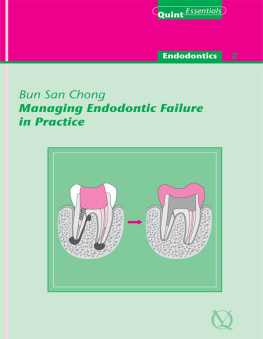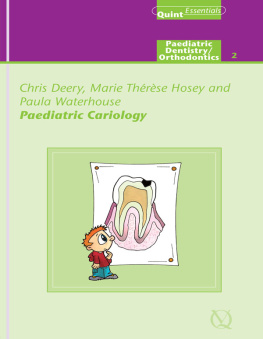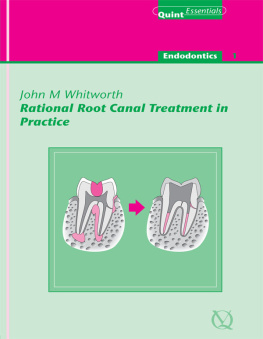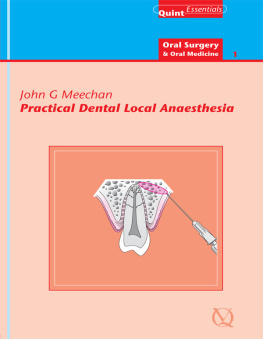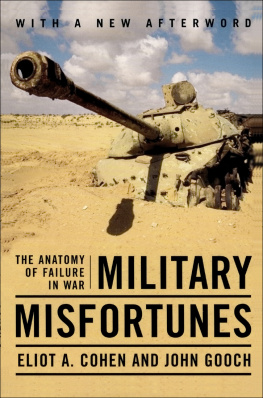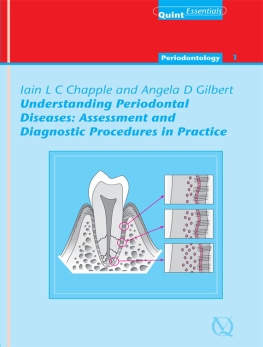
Quintessentials of Dental Practice 23
Endodontics 2
Managing Endodontic Failure in Practice
Author:
Bun San Chong
Editors:
Nairn H F Wilson
John M Whitworth

Quintessence Publishing Co. Ltd.
London, Berlin, Chicago, Copenhagen, Paris, Milan, Barcelona, Istanbul, So Paulo, Tokyo, New Delhi, Moscow, Prague, Warsaw
British Library Cataloguing in Publication Data
Chong, Bun San
Managing endodontic failure in practice. - (Quintessentials of dental practice; 23. Endodontics; 2)
1. Endodontics
I. Title II. Wilson, Nairn H. F. III. Whitworth, John M.
617.6342
ISBN 1850973091
Copyright 2004 Quintessence Publishing Co. Ltd., London
All rights reserved. This book or any part thereof may not be reproduced, stored in a retrieval system, or transmitted inany form or by any means, electronic, mechanical, photocopying, or otherwise, without the written permission of the publisher.
ISBN 1-85097-309-1
Foreword
Despite new materials, innovative techniques and a plethora of novel devices, the continuing growth and trend towards morecomplex forms of endodontics has been accompanied by an increasing need to manage endodontic failures. Such failures posemany, varied challenges which, if successfully overcome, can be both professionally rewarding and a real practice builder.
Managing Endodontic Failures in Practice provides a concise, practical overview of the when and how to save teeth with an unsatisfactory and often deterioratingendodontic outcome. From diagnosis to the monitoring of successfully re-treated teeth, Managing Endodontic Failures in Practice is clearly the work of an endodontist in the know and up to speed on the latest thinking, developments and techniques.
The valuable experience and enjoyment of reading this book is enhanced by its easy-to-read style and the large number of high-qualityillustrations included in the text just as you would expect of a Quintessence publication. Altogether this excellent additionto the Quintessentials of Dental Practice Series is a most worthwhile and enlightening volume ideal continuing professional development for the practitioner visited bypatients who present with different forms of endodontic failure.
Nairn Wilson
Editor-in Chief
Preface
With a continuing improvement in oral health and a change in patient attitude, it is no longer acceptable to extract teethsimply because of periapical disease and endodontic failure. Advances in scientific knowledge and technical skills have helpedimprove the prognosis of treatment, but it may not always lead to the desired healing response in clinical practice. If initialtreatment is unsuccessful, practitioners are increasingly expected to possess the necessary knowledge and skills to performever more technically demanding procedures to save teeth. The focus on evidence-based treatment has resulted in secondarycare providers, such as local oral surgery units, no longer being willing unquestioningly to accept failing endodontic casesfor surgery, prior to an attempt having been made to retreat by non-surgical means. The aim of this book is therefore to providepractitioners with an understanding of the biological principles and the practical techniques to handle endodontic failures.To this end, it is hoped that its contents are clear, rational, practical and helpful in dealing with endodontic retreatmentsituations in everyday clinical practice.
Since careful treatment planning is integral to success, a substantial part of this text is dedicated to case assessment andselection. It is inevitable that there will be some repetition of relevant points. There is a myriad of techniques availableto manage the many and diverse retreatment situations. It is impossible to cover them all in this book. Emphasis is placed,however, on principles and techniques relevant to general practice, followed briefly by some insight into more advanced methods.For practical instruction on retreatment techniques, practitioners are encouraged to attend hands-on courses.
Bun San Chong
Acknowledgements
I would like to thank my family, Grace, James and Louisa for their understanding and support and for accepting my periodicabsences whilst immersed in writing this book. Muchas gracias to Monica for all her help and nursing assistance over theyears.
Chapter 1
Defining Success and Failure
Aim
To review the methods of evaluating the outcome of endodontic treatment, explain the reasons for reported variations of successrate and describe the criteria for success and failure.
Outcome
After studying this chapter, the practitioner should have an understanding of how the concepts of success and failure aredefined, the process of evaluating treatment outcome, and the principles of justifying remedial treatment.
Terminology
Endodontic treatment is used as a generic term to cover the whole spectrum of pulp and periapical therapy. Root canal treatmentdescribes a specific procedure for treating the dental pulp when irreversible damage has occurred, or when vitality is compromisedby disease or injury. Although there is a distinction between the terms, in this book, endodontic treatment and root canaltreatment are used interchangeably, as in common usage.
Introduction
It has been said that there is no such thing as failure, just different degrees of success. There is some truth in this statementand it highlights the difficulties of defining success and failure objectively. Therefore, before looking at how to manageendodontic failure, it is pertinent to consider how failure may be defined.
The Strindberg Concept
The traditional, standard notion of success and failure is based on the stringent criteria encapsulated by the so-called StrindbergConcept. According to Strindberg (1956) the only satisfactory postoperative outcome, after a predetermined postoperativeperiod, is clinically a symptom-free tooth and radiologically the appearance of a normal periapex. Put simply, success isdefined as the lack of visible signs of disease while failure is defined as the presence of any signs or symptoms indicatingdisease. Such a concept is very black and white, with a definite cut-off point.
The Strindberg Concept is based exclusively on our knowledge of the disease process and represents an ideal concept ofdisease. It can, however, be perceived as being too dogmatic and inflexible for use in everyday clinical practice.
Methods of Evaluating Treatment Outcome
In theory, there are three methods (clinical, radiological and histological) available to evaluate the results of endodontictreatment (Fig 1-1).
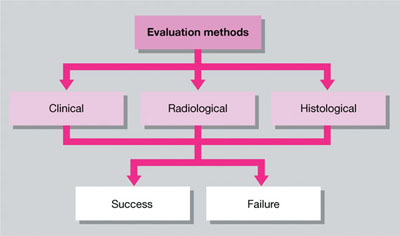
Fig 1-1 Methods of evaluating treatment outcome.
Clinical Evaluation
The patient is questioned about any symptoms experienced, whether the tooth feels normal and is comfortable in function. Aclinical examination is then carried out to look for signs of disease such as the presence of:
Next page
